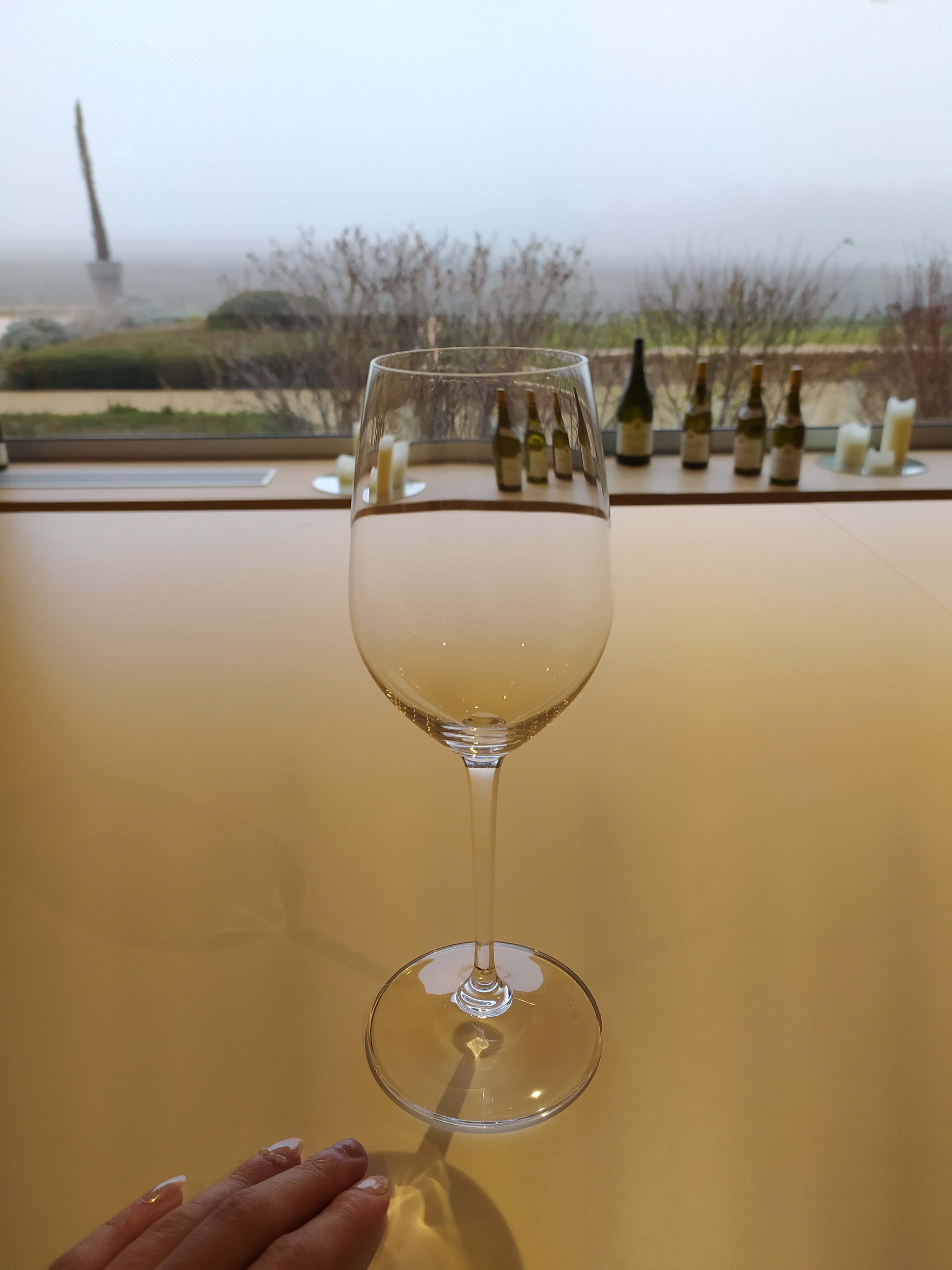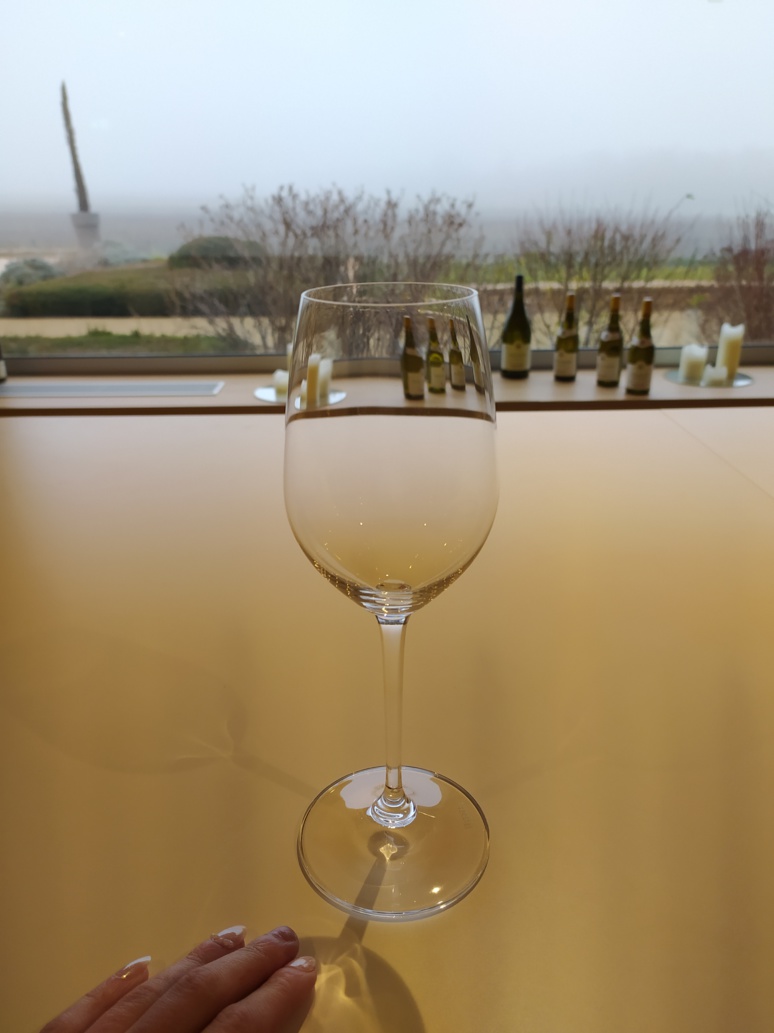Like baguette, cheese, fashion, perfum, and luxury, french wine have admirers all over the world. In fact, wine is integral to french culture and production in quantities are between 50 and 60 million hecto litres per year, so around 8 billion bottles !
Even in quarantine, we can smell and feel from the windows that summer is coming back soon ! The early bird are singing, the temparatures gets warmer, flowers and cherry blossoms tree are growing, to resume, everything to make us happy and free, except, we are again and again in quarantine ! Personaly, it make me feel a bit nostalgic of a time where we are supposed to enjoy night dinner with friends and family outside and, as a parisian girl, trust me I do miss my terrasse time with a glass of wine ! Here is few tips to make your homade wine testing like a professionnal !
Even in quarantine, we can smell and feel from the windows that summer is coming back soon ! The early bird are singing, the temparatures gets warmer, flowers and cherry blossoms tree are growing, to resume, everything to make us happy and free, except, we are again and again in quarantine ! Personaly, it make me feel a bit nostalgic of a time where we are supposed to enjoy night dinner with friends and family outside and, as a parisian girl, trust me I do miss my terrasse time with a glass of wine ! Here is few tips to make your homade wine testing like a professionnal !
Know where it comes from
1) Know where it come from
Nowadays nearly every region of France produces wine with the exception of the far northern regions. Alsace, Beaujolais, Bordeaux, Burgundy, Champagne, the Loire Valley, and the Rhone Valley are the amongst the top areas. Top French wines command some of the highest prices in the world today from collectors with deep pockets, but even with lower budget, wherever you go in France, rest assured that a fabulous meal and equally wonderful wine are waiting to be enjoyed.
Historical records can trace the origin of viniculture in France to the 6th century BC when the Phoenicians cultivated vineyards in the south of France near Marseilles. Soon winemaking spread from France to other European countries such as Spain, Italy, and Germany. Wine soon came to be regarded as a fashionable drink, which complemented rich food. Around the 5th century, eith the rise of Catholicism, wine grew in importance and medieval religious orders had a strong influence on winemaking. While the church frowned on over indulgence, it also was responsible for perfecting wines such as Champagne, widely attributed to the famous French monk, Dom Perignon.
2) Talk about French wine Appellation classification
In 1855, emperor Napoleon III suggested the development of a classification system to identify the best wines in Bordeaux. In the 1930s appellation d’origine côntrollee (AOC) was introduced in France. The distinctive characteristics of each region’s produce are protected and able to maintain their quality and prevent fraud. For instance Champagne can only be called Champagne, if it’s grown in the region of Champagne. Strict rules govern wine classification to this day.
The lowest level is AOC related to a large place of origin, e.g. Appellation + Bordeaux + Controlee The second lowest level is AOC related to a smaller place of origin, e.g. Appellation + Medoc + Controlee The second highest level is AOC related to the name of a village, e.g. Appellation + Margaux Village + Controlee The highest level is AOC related to the name of a chateau, e.g. Appellation + Chateau Lascombes + Controlee
An appellation may be defined with a place of origin only. For example, Bordeaux is not only a place of origin, but also an appellation. The place of origin may be large or small, ranging in order of region (e.g. Bordeaux and Bourgogne), community or village (e.g. Pauillac and Nuits St. Georges), and grapery (e.g. Romanee Conti). In the same area, higher-level AOC requires unit yield different from lower-level AOC and higher sugar content of harvested grapes, so the quality is generally higher.
Nowadays nearly every region of France produces wine with the exception of the far northern regions. Alsace, Beaujolais, Bordeaux, Burgundy, Champagne, the Loire Valley, and the Rhone Valley are the amongst the top areas. Top French wines command some of the highest prices in the world today from collectors with deep pockets, but even with lower budget, wherever you go in France, rest assured that a fabulous meal and equally wonderful wine are waiting to be enjoyed.
Historical records can trace the origin of viniculture in France to the 6th century BC when the Phoenicians cultivated vineyards in the south of France near Marseilles. Soon winemaking spread from France to other European countries such as Spain, Italy, and Germany. Wine soon came to be regarded as a fashionable drink, which complemented rich food. Around the 5th century, eith the rise of Catholicism, wine grew in importance and medieval religious orders had a strong influence on winemaking. While the church frowned on over indulgence, it also was responsible for perfecting wines such as Champagne, widely attributed to the famous French monk, Dom Perignon.
2) Talk about French wine Appellation classification
In 1855, emperor Napoleon III suggested the development of a classification system to identify the best wines in Bordeaux. In the 1930s appellation d’origine côntrollee (AOC) was introduced in France. The distinctive characteristics of each region’s produce are protected and able to maintain their quality and prevent fraud. For instance Champagne can only be called Champagne, if it’s grown in the region of Champagne. Strict rules govern wine classification to this day.
The lowest level is AOC related to a large place of origin, e.g. Appellation + Bordeaux + Controlee The second lowest level is AOC related to a smaller place of origin, e.g. Appellation + Medoc + Controlee The second highest level is AOC related to the name of a village, e.g. Appellation + Margaux Village + Controlee The highest level is AOC related to the name of a chateau, e.g. Appellation + Chateau Lascombes + Controlee
An appellation may be defined with a place of origin only. For example, Bordeaux is not only a place of origin, but also an appellation. The place of origin may be large or small, ranging in order of region (e.g. Bordeaux and Bourgogne), community or village (e.g. Pauillac and Nuits St. Georges), and grapery (e.g. Romanee Conti). In the same area, higher-level AOC requires unit yield different from lower-level AOC and higher sugar content of harvested grapes, so the quality is generally higher.
Learn the basic
3) Learn basics to speak like a professional
The acidity, body, aromas, and flavors of wine are all factors to consider when searching for one to match a specific dish. These attributes mean different thing to different palates.
Acid: Sour and sharp notes of the wine will determine the acidity level. This is much like biting into a super sour apple feels on the palate as it hits your tongue with a sharp sensation.
Body: The body of the wine is established by the weight and mouthfeel when you taste it. It can be light, also called thin, or it can be heavy, creamy even oily. As with all wine attributes, the body is an opinion of the taster.
Aroma: The aroma, or bouquet, of wine, is about the smell. The nose of wine can be one or two notes or a complex mix of aromas that blend and change as the wine is swirled and exposed to air. Try to identify earthy, floral, fruity, and nutty notes, among many others.
Flavor: The flavor of the wine is mostly determined by its aromas; what we smell is what we taste which will be unrelated to the smell. For example, a wine may have a light, fruity bouquet, or deep, earthy flavors.
4) Pair your wine with food properly
The rule of thumb is to pair wine with food that equals its intensity.
Haut du formulaire
Bas du formulaire
- The wine should be more acidic than the food.
- The wine should be sweeter than the food.
- The wine should have the same flavor intensity as the food.
- Red wines pair best with bold flavored meats (e.g. red meat).
- White wines pair best with light-intensity meats (e.g. fish or chicken).
- Bitter wines (e.g. red wines) are best balanced with fat.
- It is better to match the wine with the sauce than with the meat.
- More often than not, White, Sparkling and Rosé wines create contrasting pairings.
- More often than not, Red wines will create congruent pairings.
Suggestions for Excellent Food and Wine Pairings
• Sauternes with bleu cheese.
• Chardonnay with chicken, scallops, lobster, and brie.
• Sauvignon Blanc with shrimp, acidic pork, oysters, and whitefish.
• Pinot Noir with salmon, fatty fish, and duck.
• Zinfandel or red/white Burgundy with turkey, pheasant, and quail.
• Red Bordeaux with lamb.
• Beaujolais with traditional pork.
• Cabernet Sauvignon with beef, venison, and grilled meat.
• Burgundy with braised meat and game.
• White wine served with skate wing with brown butter.
Updated by Elaine Lemm]
The acidity, body, aromas, and flavors of wine are all factors to consider when searching for one to match a specific dish. These attributes mean different thing to different palates.
Acid: Sour and sharp notes of the wine will determine the acidity level. This is much like biting into a super sour apple feels on the palate as it hits your tongue with a sharp sensation.
Body: The body of the wine is established by the weight and mouthfeel when you taste it. It can be light, also called thin, or it can be heavy, creamy even oily. As with all wine attributes, the body is an opinion of the taster.
Aroma: The aroma, or bouquet, of wine, is about the smell. The nose of wine can be one or two notes or a complex mix of aromas that blend and change as the wine is swirled and exposed to air. Try to identify earthy, floral, fruity, and nutty notes, among many others.
Flavor: The flavor of the wine is mostly determined by its aromas; what we smell is what we taste which will be unrelated to the smell. For example, a wine may have a light, fruity bouquet, or deep, earthy flavors.
4) Pair your wine with food properly
The rule of thumb is to pair wine with food that equals its intensity.
Haut du formulaire
Bas du formulaire
- The wine should be more acidic than the food.
- The wine should be sweeter than the food.
- The wine should have the same flavor intensity as the food.
- Red wines pair best with bold flavored meats (e.g. red meat).
- White wines pair best with light-intensity meats (e.g. fish or chicken).
- Bitter wines (e.g. red wines) are best balanced with fat.
- It is better to match the wine with the sauce than with the meat.
- More often than not, White, Sparkling and Rosé wines create contrasting pairings.
- More often than not, Red wines will create congruent pairings.
Suggestions for Excellent Food and Wine Pairings
• Sauternes with bleu cheese.
• Chardonnay with chicken, scallops, lobster, and brie.
• Sauvignon Blanc with shrimp, acidic pork, oysters, and whitefish.
• Pinot Noir with salmon, fatty fish, and duck.
• Zinfandel or red/white Burgundy with turkey, pheasant, and quail.
• Red Bordeaux with lamb.
• Beaujolais with traditional pork.
• Cabernet Sauvignon with beef, venison, and grilled meat.
• Burgundy with braised meat and game.
• White wine served with skate wing with brown butter.
Updated by Elaine Lemm]
The etiquette
5) Follow the Etiquette and good manners
- Never drink wine without food
For the French, wine and food go hand in hand which is why you will very rarely see a French person drinking wine on its own – in particular red wine. Even if you’re having champagne or roséas an aperitif before dinner, which is the norm, you enjoy it with some olives, canapés or baguette.
- Always toast with every guest individually
Raising your glasses for a toast is very important in France, but it’s important to do it the proper way, otherwise it could bring bad luck. The right way to do it is to wait for all of your guests to arrive. Instead of doing a big group toast, you raise your glass,“À ta santé” (to your good health) answered by “à la tienne” (to yours) – matching a “tu”or “à votre santé” (to your good health) answered by “à la vôtre” (to yours) – matching a “vous”or even just “tchin-tchin” (cheers), while you lock eyes with the person next to you and clink glasses, before you do the same ritual with every single guest. Never ever cross arms though.
- If you’re a guest, bring a bottle to your host. 75% of French people drink wine on a regular basis, so your wine will not be wasted. Wine is easier to put aside when you arrive, rather than flowers that need to be put in a vase and can create a bit of a panic for the host.
- Don’t assume the bottle you bring will be consumed in your presence. The host has often picked special wines to accompany the meal. Maybe they are serving fish and your full-bodied red won’t cut it. If you’re dying to try a certain wine, buy it for yourself and not for your host as you’re not sure to get to try the one you will bring.
- Don’t pour your own wine
If you’re a guest at someone’s house and find your wine glass is empty, don’t even think about grabbing the bottle and topping yourself up – it’s considered incredibly rude. Instead, wait for your host to ask if you would like some more, and she will pour you a refill.
- Don’t ask for a full glass
If your host is pouring you a glass of wine, chances are they will only fill it half way. If you ask your host to fill your glass to the brim, not only is that considered rude but you will be considered a lush. On the other hand, if you stop them when they’ve just poured a dash of wine into your glass, that will come across as rude and your host will think you don’t appreciate their wine. In other words, just gracefully accept what – and how much – the host is serving you.
- Don’t buy the cheapest wine in the store
If you are invited to dinner at a French person’s home, it’s customary to bring a bottle of wine or some chocolate. However, don’t buy the cheapest bottle in the store. Wine often becomes part of the conversation, so make sure you bring a wine you particularly enjoy and that you know something about. If you are feeling unsure of what to bring, you can’t go wrong with a bottle of Champagne.
- For the girls, never leave lipstick stains on your wine glass
It’s considered rude even in restaurants to leave lipstick stains on your wine glass, so make sure you wear a smudge proof, long lasting lipstick !
- Never drink wine without food
For the French, wine and food go hand in hand which is why you will very rarely see a French person drinking wine on its own – in particular red wine. Even if you’re having champagne or roséas an aperitif before dinner, which is the norm, you enjoy it with some olives, canapés or baguette.
- Always toast with every guest individually
Raising your glasses for a toast is very important in France, but it’s important to do it the proper way, otherwise it could bring bad luck. The right way to do it is to wait for all of your guests to arrive. Instead of doing a big group toast, you raise your glass,“À ta santé” (to your good health) answered by “à la tienne” (to yours) – matching a “tu”or “à votre santé” (to your good health) answered by “à la vôtre” (to yours) – matching a “vous”or even just “tchin-tchin” (cheers), while you lock eyes with the person next to you and clink glasses, before you do the same ritual with every single guest. Never ever cross arms though.
- If you’re a guest, bring a bottle to your host. 75% of French people drink wine on a regular basis, so your wine will not be wasted. Wine is easier to put aside when you arrive, rather than flowers that need to be put in a vase and can create a bit of a panic for the host.
- Don’t assume the bottle you bring will be consumed in your presence. The host has often picked special wines to accompany the meal. Maybe they are serving fish and your full-bodied red won’t cut it. If you’re dying to try a certain wine, buy it for yourself and not for your host as you’re not sure to get to try the one you will bring.
- Don’t pour your own wine
If you’re a guest at someone’s house and find your wine glass is empty, don’t even think about grabbing the bottle and topping yourself up – it’s considered incredibly rude. Instead, wait for your host to ask if you would like some more, and she will pour you a refill.
- Don’t ask for a full glass
If your host is pouring you a glass of wine, chances are they will only fill it half way. If you ask your host to fill your glass to the brim, not only is that considered rude but you will be considered a lush. On the other hand, if you stop them when they’ve just poured a dash of wine into your glass, that will come across as rude and your host will think you don’t appreciate their wine. In other words, just gracefully accept what – and how much – the host is serving you.
- Don’t buy the cheapest wine in the store
If you are invited to dinner at a French person’s home, it’s customary to bring a bottle of wine or some chocolate. However, don’t buy the cheapest bottle in the store. Wine often becomes part of the conversation, so make sure you bring a wine you particularly enjoy and that you know something about. If you are feeling unsure of what to bring, you can’t go wrong with a bottle of Champagne.
- For the girls, never leave lipstick stains on your wine glass
It’s considered rude even in restaurants to leave lipstick stains on your wine glass, so make sure you wear a smudge proof, long lasting lipstick !













 Substance Café : L'Élixir de Café le plus sublime de Paris à l’expérience la plus unique au monde
Substance Café : L'Élixir de Café le plus sublime de Paris à l’expérience la plus unique au monde








